 Mysteries
Mysteries  Mysteries
Mysteries  History
History 10 Surprising Stories About the Texas Rangers
 Humans
Humans 10 Philosophers Who Were Driven Mad by Their Own Theories
 Miscellaneous
Miscellaneous 10 Video-Game-Worthy Weapons and Armors from History
 Weird Stuff
Weird Stuff 10 Psychics Who Accurately Predicted Wartime Events
 The Arts
The Arts 10 Pieces of Art Inspired by a Broken Heart
 Health
Health 10 Science Fiction-Sounding New Medical Treatments
 History
History 10 Surprising Facts About the Father of Submarine Warfare
 Space
Space Ten Astonishing New Insights into Alien Worlds
 Weird Stuff
Weird Stuff 10 Bizarre Summer Solstice Rituals Still Practiced Today
 Mysteries
Mysteries Top 10 Haunting Facts About the Ghost Ship MV Alta
 History
History 10 Surprising Stories About the Texas Rangers
 Humans
Humans 10 Philosophers Who Were Driven Mad by Their Own Theories
Who's Behind Listverse?

Jamie Frater
Head Editor
Jamie founded Listverse due to an insatiable desire to share fascinating, obscure, and bizarre facts. He has been a guest speaker on numerous national radio and television stations and is a five time published author.
More About Us Miscellaneous
Miscellaneous 10 Video-Game-Worthy Weapons and Armors from History
 Weird Stuff
Weird Stuff 10 Psychics Who Accurately Predicted Wartime Events
 The Arts
The Arts 10 Pieces of Art Inspired by a Broken Heart
 Health
Health 10 Science Fiction-Sounding New Medical Treatments
 History
History 10 Surprising Facts About the Father of Submarine Warfare
 Space
Space Ten Astonishing New Insights into Alien Worlds
 Weird Stuff
Weird Stuff 10 Bizarre Summer Solstice Rituals Still Practiced Today
Top 10 Times Hurricanes Left Strange Things Behind
Hurricanes are one of nature’s greatest forces. With great power comes great . . . all right, hurricanes have no responsibility. (Sorry, Spider-Man.)
But they do leave interesting things in their wake. Uprooting ancient artifacts and freeing the biggest alligator is just the start. The superstorms also solve cold cases, creep out the Internet with monsters, and leave behind incredible survivors.
10 Incredibly Strange Facts About Hurricanes
10 Island-Hopping Cows
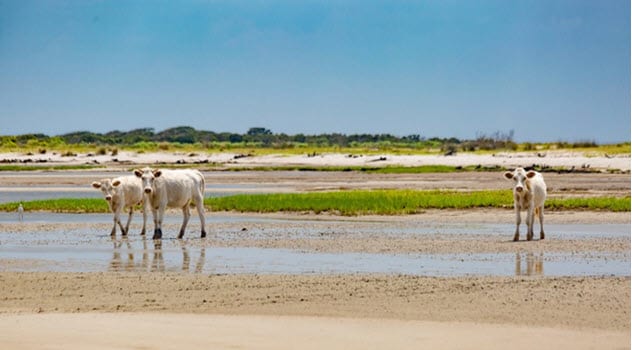
Cedar Island is home to wild herds of horses and cattle. After Hurricane Dorian swept into North Carolina in 2019, locals decided to check on the animals’ well-being. They were devastated to find that 17 cows and 28 horses were missing. Their worst fears were confirmed when the bodies of some of the horses began to wash ashore. The rest of the missing animals were presumed to have also drowned.
Cape Lookout National Seashore is separated from Cedar Island by roughly 6–8 kilometers (4–5 mi). The distance is not cow-paddle friendly. Yet, three of the missing bovines were found happily grazing on Cape Lookout.
How they made it to the island alive is a mystery. Even if the storm surge pulled them along, the fact that they survived being tossed in a brutal sea the entire distance is a miracle.[1]
9 Civil War Cannonballs
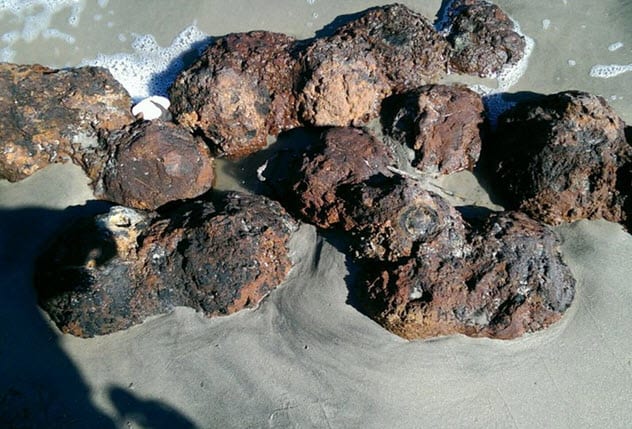
After Hurricane Dorian left South Carolina, a couple combed the beach for tidbits. The area, Folly Beach, had already delivered 16 cannonballs from the Civil War after Hurricane Matthew swept through the region in 2016. The couple found two more cannonballs from the same war. Initially, they mistook the weathered artifacts for rocks. But a closer look revealed a complete cannonball and a partial shell.
The authorities took the discovery seriously and cordoned off the area. The myth that all cannonballs are solid metal is a dangerous one. Some are live explosives because they contain gunpowder.
The two artifacts probably contained gunpowder because most of the Hurricane Michael batch did. Explosive experts took over both cases, and the cannonballs were likely destroyed for safety reasons.[2]
8 Irma Closed A Police Case
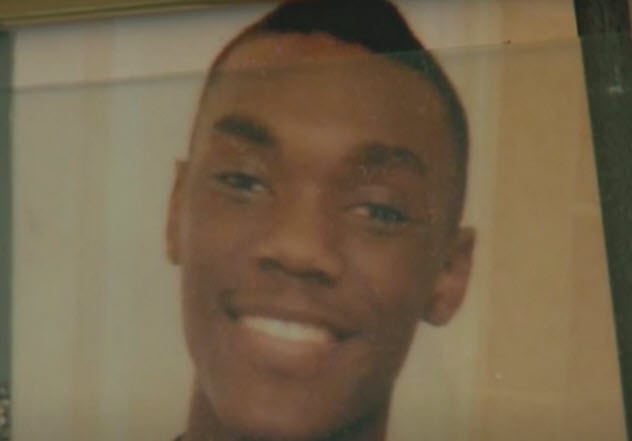
In 2013, Rodelson Normil decided to go for a swim in the ocean. The 17-year-old was last seen near Gulfstream Park when a riptide pulled him into the open sea. His body was never found. Four years later, Hurricane Irma hit the area. Among the things pushed ashore by the storm was a human bone.
The femur was taken to a laboratory in Texas for identification. As Normil was known to have vanished in the area, scientists extracted genetic material from his toothbrush and from his parents.
The DNA from his family and his toothbrush matched the bone’s DNA, confirming that the teenager had not survived. The case was finally closed as an “accidental drowning.”[3]
7 Floating Fire Ant Colonies
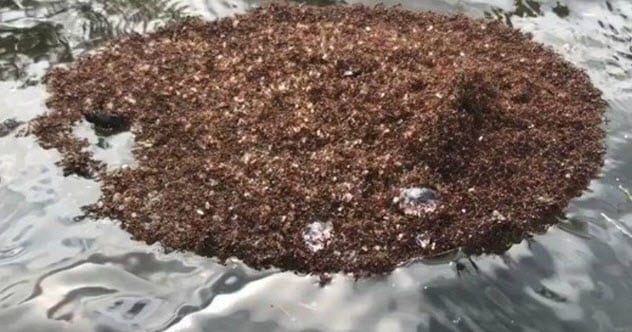
When Hurricane Florence waltzed through the Carolinas in 2018, she brought severe flooding to several neighborhoods. The water hid many dangers, including snakes and downed power lines. But another threat floated openly on the surface—colonies of ticked-off fire ants.[4]
When a flood hits, this species floats to safety by clinging to a living raft. It consists of all the ants clustering together, including their eggs, larvae, and queen.
Although this strategy stops the colony from drowning, the ants are quite vulnerable out in the open. That makes them nobody’s friend. The ants attack anyone who touches them.
The unbelievably painful sting has earned them the name “fire ants.” Indeed, during the aftermath of Florence, the rafts looked like harmless debris. But they posed a very real danger to rescue workers and people moving through the water.
6 Fresh Evidence Of Historical Explosion
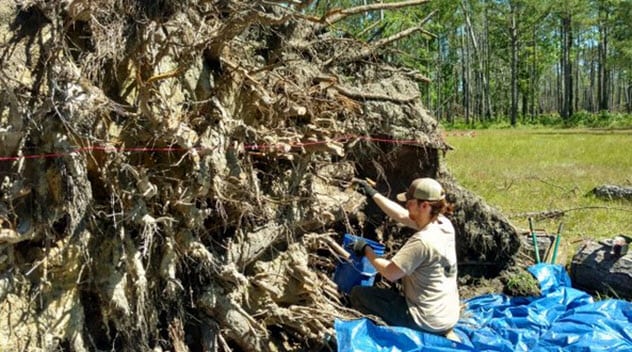
In 1816, the US Navy attacked a fort in Florida. The fort held 320 people, mostly Native Americans and former African-American slaves. The community refused to surrender, and a week-long battle ensued.
During a devastating moment, a shot fired by the navy hit the fort’s ammunition depot. The explosion killed 270 people. Later, the survivors succumbed to injuries inflicted by the blast and the soldiers who stormed the fort.[5]
In the following years, the site was renamed Fort Gadsden. Vegetation sprang up everywhere. But in 2019, Hurricane Michael toppled roughly 100 trees. When archaeologists returned to assess the damage, they discovered fresh artifacts from that terrible day.
Stuck in the root balls of the trees was ammunition from the depot, including musket balls. Apparently, as time went by, the trees grew over the devastation, pushed the items deeper into the ground, and kept them out of sight until Michael ripped their roots from the earth.
5 Imelda Freed America’s Biggest Alligator

Imelda was technically a tropical storm. Had the tempest been slightly stronger, it would have been classified as a hurricane. But nobody at Gator Country cared for the somewhat reduced status of the storm. When Imelda hit their alligator sanctuary in Texas, the reality was terrifying.
Imelda arrived in 2019 and dropped 109 centimeters (43 in) of rain on the Beaumont facility. The floodwaters rose above the fences that kept the alligators in their pens.
When the waters receded, many gators were missing—including Big Tex. Measuring 4.3 meters (14 ft) and weighing 454 kilograms (1,000 pounds), he was the biggest alligator that had ever been captured in America.[6]
Luckily for the neighborhood pets, the gator was found and returned to the sanctuary within a few days. The reptile was lucky, too. He had escaped during the peak of alligator hunting season.
4 Miracle The Dog
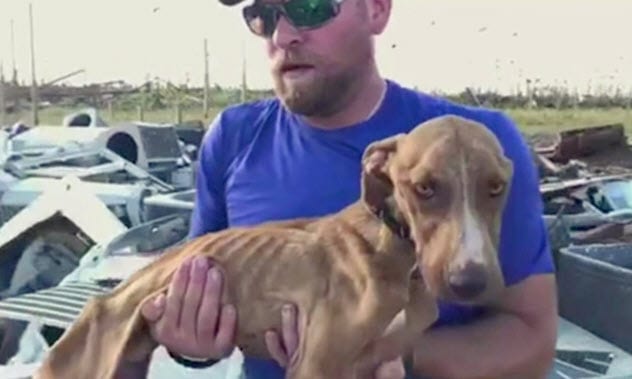
Hurricane Dorian (of the island-hopping cow fame) also razed the Bahamas. This time, the storm devastated pets along with their homes. Animal welfare organizations rescued any dogs that they could find. But as the weeks fell away, so did the hope that more pets would be found alive under the rubble.
One organization, the Big Dog Ranch Rescue in Palm Beach County, refused to give up. They used drones to search the worst-affected areas and difficult-to-reach places. That’s how they noticed a dog trapped under an air conditioner in Marsh Harbor. Incredibly, despite not having eaten anything for almost four weeks, he was still alive.
The emaciated pet became the 138th dog rescued by the group and was suitably named Miracle. He recuperated at Big Dog Ranch for a few weeks. Once Miracle had put some fat on his bones, the plucky pup was put up for adoption.[7]
3 Hurricane Harvey’s Monster
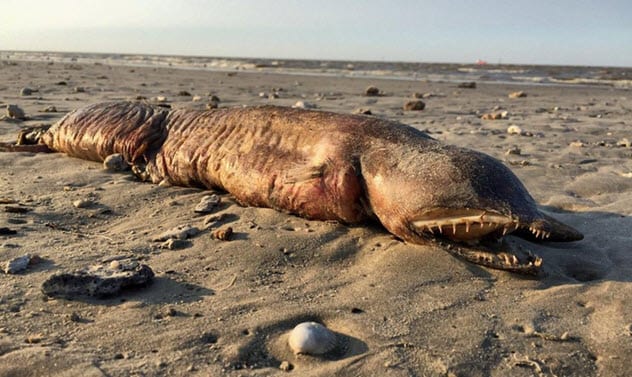
Texas endured Hurricane Harvey in 2017. Shortly after the storm fizzled, science communicator Preeti Desai went for a walk on the beach and found a creature pulled from the ocean by Harvey.
The animal was already decomposing, which was why Desai could not identify it straightaway. But with the serpentine body and jaws lined with fangs, it looked like the proverbial sea monster.[8]
The Internet went ape. The beast reached stardom among cryptid sleuths, but the experts agreed that Desai had found an eel. The species was a mystery. Desai had taken pictures of the creature, but she had left its body behind.
As DNA tests were out, the carcass was matched to known eel species based on the length of its body and scary set of teeth. The suspects for Harvey’s monster include the fangtooth snake-eel, the tusky eel, and the stippled spoon-nose eel.
2 Ophelia’s Strange Red Sky
The former Hurricane Ophelia pulled a number on Ireland in 2017. While the damage was noteworthy, the most memorable moment occurred after the storm had passed. In Britain, the sky was no longer blue. Instead, the atmosphere had an eerie red glow.
On the way over to Ireland, Ophelia scooped sand from the Sahara desert. This grainy cloud was so large that it disrupted the atmosphere’s physics. Specifically, the dust messed with the color blue.
Any wavelength that carried blue was reflected into the sky, while red waves were allowed to go through. This desert-in-the-sky filter led to the hazy redness that lasted for at least a day.[9]
1 Homes In The Air

The horror known as Hurricane Sandy landed in 2012. Among the places flooded by the superstorm was the Jersey Shore. Countless properties were damaged or destroyed by the water. The community responded in an unusual way. Instead of moving to a safer place, many residents simply moved their homes higher into the air.
Several years after Sandy, the neighborhood has been changed forever. Some houses are down on the ground, while the rest are raised high in the sky. Their elevated garages cannot be used, and their front porches (steps and all) now look more like strange balconies.[10]
10 Hurricane Survivors And Their Stories Of Survival








